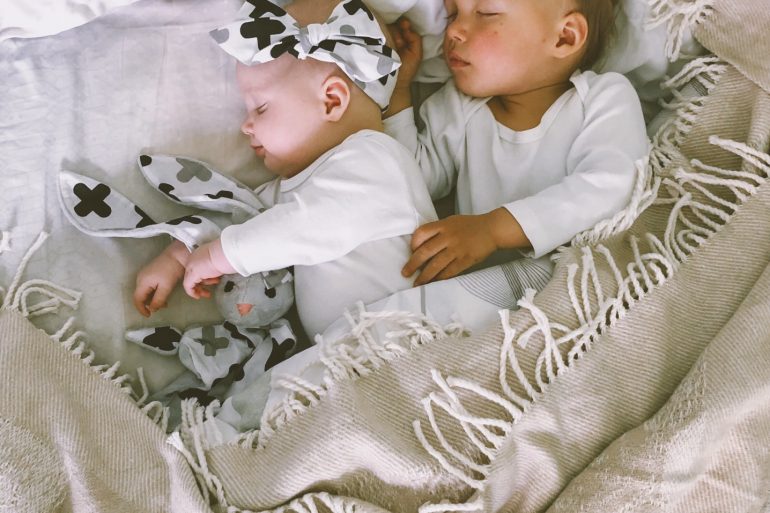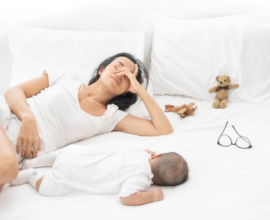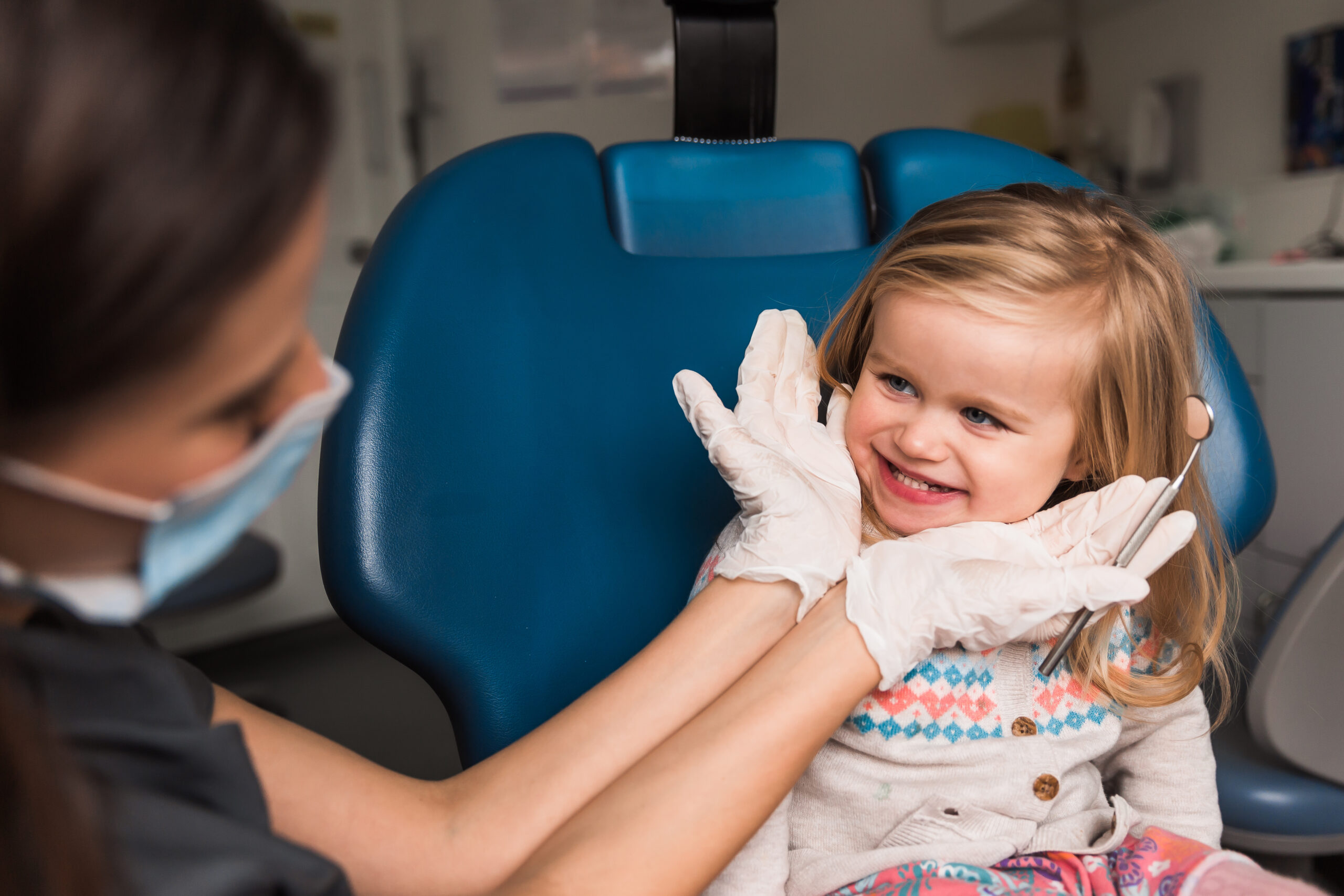Safe Co-Sleeping 101: The Differences Between Room Sharing and Bed Sharing
Safety. Safety. Safety. That’s one of your many new priorities when you become a parent. You will do anything and everything to keep your new bundle of love safe. One of the best ways to keep your baby safe is to room share. Let’s be clear on what room sharing is though. There is a difference between “room sharing” and “bed-sharing”.
What Are the Differences Between Room Sharing and Bed Sharing
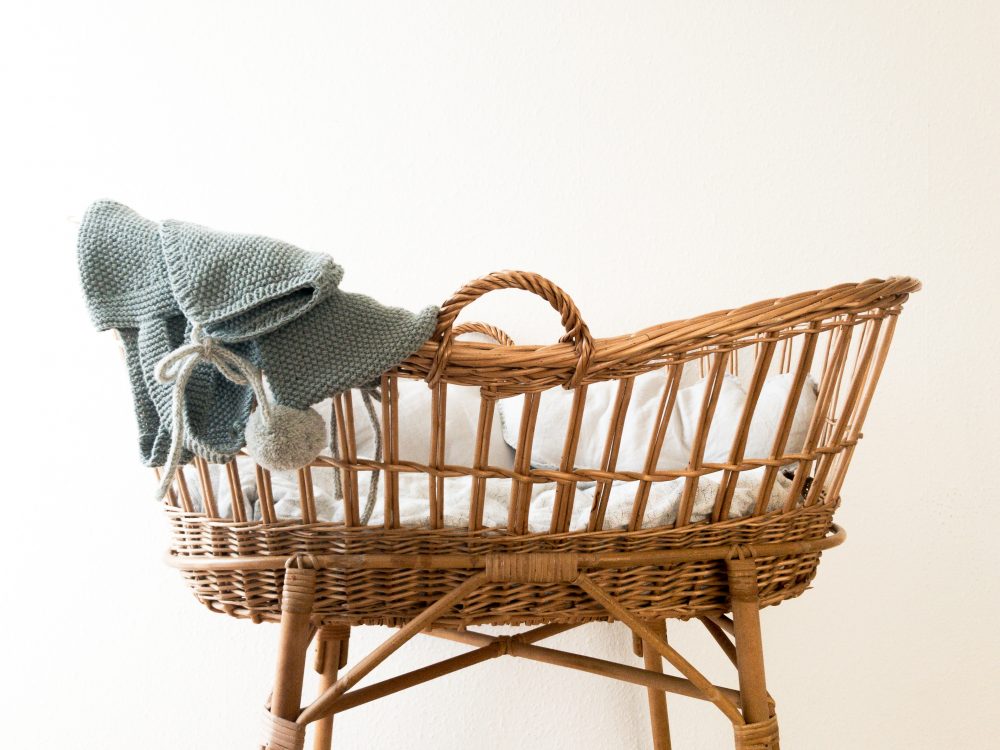
Room sharing is having your baby sleep in the same room with you but in a separate bed, such as a bassinet. This type of room sharing is highly recommended by the American Academy of Pediatrics (AAP). Bed sharing, however, is when your baby sleeps in the same bed as you. This is considered a highly unsafe sleep practice, especially for newborns, and increases the risk of Sudden Infant Death Syndrome (SIDS).
Best Sleep Practices
One of the best ways to encourage the safe sleep practice of room-sharing is by using a bassinet in your room, next to your bed. In doing so, this also encourages breastfeeding, if you’re going that route. Why? When your little one wakes up to eat (which will be every two to three hours in the beginning) you have a safe sleep surface to swaddle them when they are finished – safely – instead of being oh so tired and bringing them to bed with you.
Close, But Not Too Close
Placing a bassinet close to the parent’s bed so your baby is within view and reach can facilitate feeding, comforting, and monitoring of your little one, and of course, keeping them SAFE! The first few times your baby sleeps in a long stretch, you’ll be jumping to the bassinet and putting your finger right under their little nose or feeling their chest to make sure they’re still breathing, so having them close by is quite useful!
Creating Safe Sleep Environments
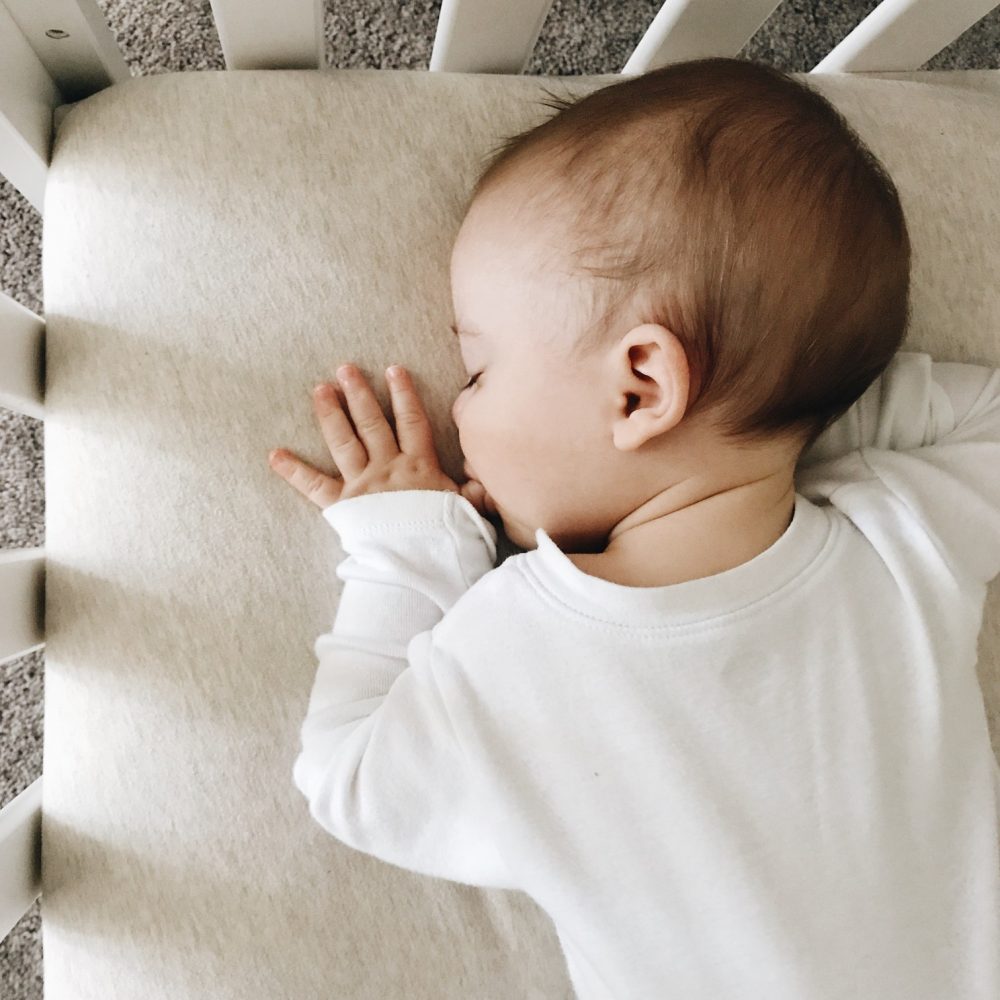
Here are the recommendations on creating a safe sleep environment from the AAP:
- Placing the baby on his or her back on a firm sleep surface, such as a crib or bassinet, with a tight-fitting sheet.
- Avoid the use of soft bedding, including crib bumpers, blankets, pillows, and soft toys.
- Sharing a bedroom with parents, but not the same sleeping surface, preferably until the baby turns one, but at least for the first six months.
- Avoiding baby’s exposure to smoke, alcohol, and illicit drugs.
It’s important to make note of the AAP’s 2016 recommendation to keep your baby in your room until ONE year of age. The reason for this recommendation was to encourage parents who were practicing unsafe bed-sharing and co-sleeping to stop doing so, use a separate sleeping space, and reduce the risk of SIDS. Please know that this is a cautious recommendation that has been called into question.
Moving Baby to Their Own Room
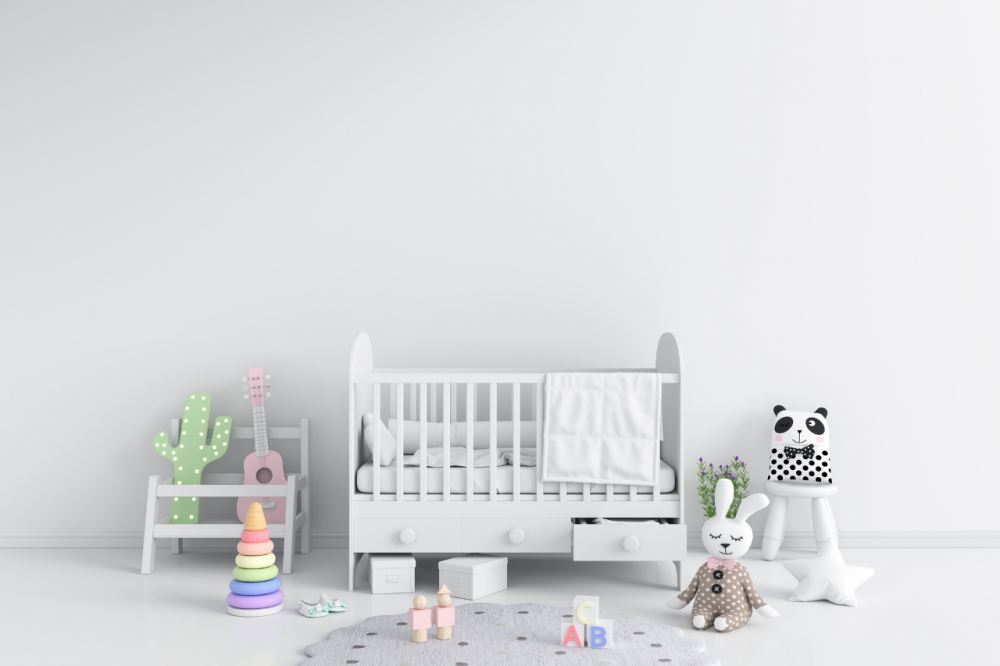
Following this recommendation, in the July 2017 issue of Pediatrics (the official journal of the AAP), another study was published indicating that room-sharing beyond four to nine months led to less nighttime sleep and more nighttime wakings! In fact, the study found that babies whose room was shared beyond four months of age were four times more likely to end up in their parent’s bed and two times more likely to have unsafe sleeping materials nearby during sleep, such as pillows and blankets.
Just be aware that keeping your little one in your room beyond four to nine months can actually increase parental behaviors that are known to increase the risk of SIDS and lead to less sleep. Also, know that there is no significant evidence that room-sharing until one year of age prevents SIDS, so always do what is best for your family and keep your little one safe – however long you decide to room share.
Sleep Little One, Sleep
You might be wondering why more nighttime waking happens between four to nine months when room sharing. We all have little brief awakenings during our sleep (a natural part of our sleep cycle), but we fall right back to sleep, unlike our babies.
Around four months of age, your little one becomes much more aware of their surroundings, so seeing, smelling, or just knowing that mom or dad is right there can lead to a full wake-up for your little one. Moving your little one to another room at this point may encourage longer stretches of sleep. Get some tips on how to transition your child to their own crib,
Need Sleep Help?
There are a lot of other factors that go into setting up healthy sleep habits for your baby, such as the bedroom environment, timing, and positive sleep associations, among others. If you are struggling with your little one’s sleep, please know that sleep help is available for you and your little one. Healthy Little Sleepers has a free initial call you can book online at your convenience to discuss your situation and get acquainted.

